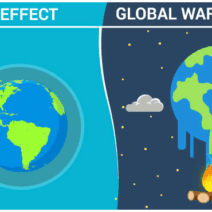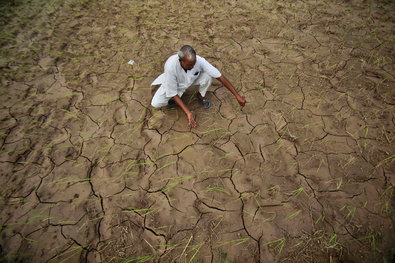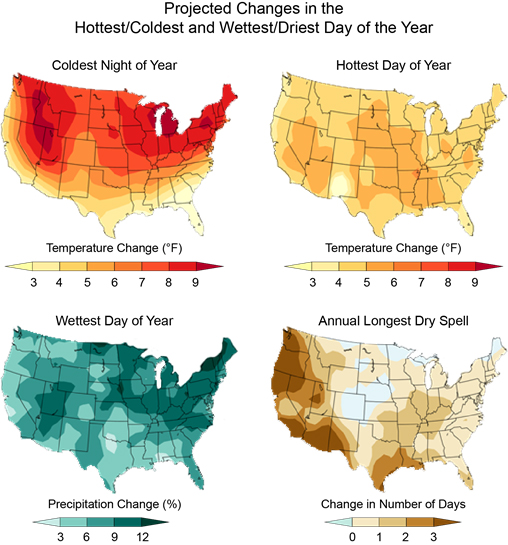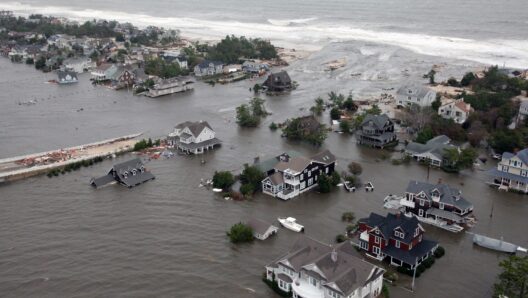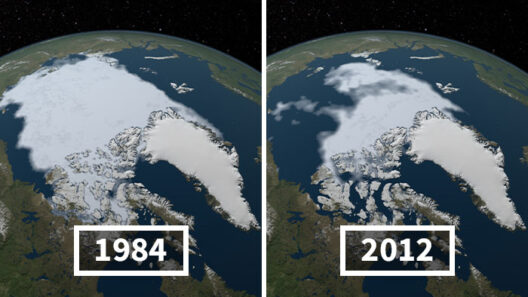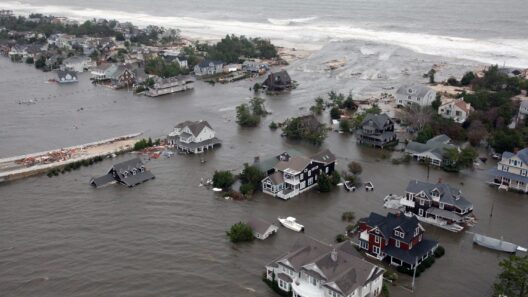Could global warming flood all land on Earth? It’s a provocative question that invites both disbelief and contemplation. The narrative surrounding climate change is often laden with dire predictions, yet the idea of a planet submerged in water feels almost surreal. Nevertheless, the mechanisms driving climate change warrant serious consideration, raising inquiries about our future and the sustainability of terrestrial life.
At the crux of this discussion is the greenhouse effect, an essential yet often overlooked process. Greenhouse gases, including carbon dioxide (CO2), methane (CH4), and nitrous oxide (N2O), trap heat in the atmosphere, leading to an increase in global temperatures. Over the past century, industrialization, deforestation, and the burning of fossil fuels have exponentially increased concentrations of these gases. The elevated thermal energy results in numerous consequences, not least of which is the melting of polar ice caps.
The polar ice caps, particularly in Greenland and Antarctica, act as colossal reservoirs of frozen freshwater. As global temperatures rise, these colossal formations of ice begin to melt at an alarming rate. Research indicates that Greenland alone could contribute several meters to global sea levels by the end of the century if current warming trends persist. The implications of this melting are profound, particularly for coastal communities worldwide.
Consider the world’s coastlines, which are home to some of the most densely populated areas. Cities like New Orleans, Miami, and Jakarta are already grappling with increased flooding due to rising sea levels. The Intergovernmental Panel on Climate Change (IPCC) warns that sea levels could rise by over a meter by 2100 if significant action isn’t taken. If temperatures continue to soar, scientists project even more drastic increases, potentially inundating vast stretches of land. This isn’t just about beaches disappearing; it’s about homes, livelihoods, and ecosystems being irrevocably altered.
Yet, the complexities of global warming unfold beyond mere ice melt. The thermal expansion of seawater must also be factored in. As water warms, it occupies more space, exacerbating the rise in sea levels. Laboratory studies have demonstrated that even a modest increase in temperature can lead to significant expansion in the ocean’s volume. This phenomenon contributes to the alarming projections of flooding and coastal erosion, emphasizing that we are dealing with multiple interlinked issues.
Moreover, it begs the question: how will different regions of the world react to this deluge of water? Low-lying countries like the Maldives or Bangladesh face existential threats. Entire populations may find their homes rendered uninhabitable, leading to climate refugees—individuals forced to flee their homes due to environmental changes. Not only does this provoke humanitarian crises, but it also ignites socio-political tensions as resources become scarce. With a deluge of climate migrants seeking refuge, nations may be faced with insurmountable challenges in accommodating these individuals.
In the face of such daunting scenarios, one might wonder about the resilience of humanity. Is it possible to erect barriers against this progressing tide? Coastal defenses, such as sea walls and artificial islands, may offer temporary reprieve, but these are band-aids on a more extensive issue. Building infrastructure that can withstand the inevitable rise in water levels requires astronomical amounts of financial investment and an unprecedented degree of international cooperation.
Furthermore, biodiversity is at stake. Marine ecosystems will also undergo transformations as salinity levels shift and water temperatures fluctuate. Species that cannot adapt quickly enough may face extinction, leading to biodiversity loss with cascading effects on food webs and ecosystem services. The vitality of coral reefs—often dubbed the rainforests of the sea—is particularly precarious. Coral bleaching, largely attributed to warmer waters, further illustrates how closely intertwined environmental systems are.
On the flip side, one might ask whether global warming could catalyze innovative solutions. Human ingenuity has always thrived on challenge. The urgent need for renewable energy sources, sustainable agriculture, and resilient urban planning ignites a creativity that can lead to transformative solutions. Technologies such as carbon capture and storage (CCS) could mitigate some impacts of greenhouse gases, while advances in sustainable architecture might pave the way for adaptive living spaces. However, this optimism does hinge on immediate action and collective accountability.
This discourse also touches upon the ethical dimensions of climate change. Wealthier nations, contributing disproportionately to greenhouse gas emissions, hold a moral responsibility to lead the charge in combating climate change. Conversely, developing nations, often the most affected by flooding and rising sea levels despite having low historical emissions, must not be left behind. Climate justice emphasizes that all nations should collaborate to rectify the present trajectory, ensuring that developing nations are not submerged beneath the escalating tide of climate disasters.
As we ponder the tantalizing question—could global warming flood all land on Earth?—the answer appears compounded, dependent on a myriad of factors, including global action and individual responsibility. One must acknowledge the reality that our planet is in peril, but we possess the means to influence the outcome. Collective action today can significantly alter the course of tomorrow. Decisions made in boardrooms, policy halls, and individual homes will reverberate through time, potentially steering humanity away from a submerged future.
The challenge is immense, yet within it lies an opportunity for a resilient and united response. It is vital that we not only consider the ramifications but also engage in proactive discussions rooted in science, ethics, and innovation. By doing so, we pave the path toward a sustainable future, potentially keeping the land above water.


